Dive into the colorful animal kingdom of the former Imperial collection! Many creatures, from endearing animals to hauntingly remarkable fish, are portrayed in diverse art forms―calligraphy, painting, embroidery, metalwork, ceramic, and more.
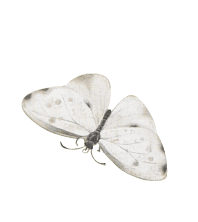
The Museum is pleased to present Wild Wonders: The Animal Kingdom in the Imperial Collections, an exhibition exploring diverse portrayals of wildlife in an eclectic range of genres.
Creatures of all shapes and sizes permeate our world, inspiring artists with their behaviors and habitats—fish darting through water, insects hiding in undergrowth, and small mammals scurrying through fields and mountains. Figurines and everyday objects are often fashioned into such furred and feathered subjects to delight and amuse the viewer, with smaller creatures being a particular favorite.
Wild Wonders is a celebration of animal-themed objects preserved by the Imperial Household, including paintings, calligraphy, and decorative arts. In addition to Japanese art, the exhibition features pieces from around the world that have been gifted to members of the Imperial Family in the course of their duties. These powerful and endearing works offer a colorful reminder of the universal value and majesty of life.
Since its founding in 1993, the Museum’s mission has been to preserve cultural masterpieces passed down by the Imperial Family and produce new knowledge about them through research. The Museum reopened after renovations in November 2023, commemorating the event with an eight-month exhibition in four parts. Wild Wonders marks the first unrelated exhibition since reopening.
Dive into the colorful animal kingdom of the former Imperial collection! Many creatures, from endearing animals to hauntingly remarkable fish, are portrayed in diverse art forms―calligraphy, painting, embroidery, metalwork, ceramic, and more.
Don’t miss your chance to see two paintings "Goose and Reeds" (First Rotation) and "Pond and Insects" (Second Rotation) from the spectacular series Colorful Realm of Living Beings (National Treasure) created by the visionary artist Ito Jakuchu (1716–1800) to celebrate the majesty of life.
Discover international artworks featuring various animals in an eclectic range of forms and colors, which were gifted to the Imperial Family members from other nations.
Animals have featured prominently in written and painted works in Japan for thousands of years. When a writing system was adopted from China, people composed poems in Chinese characters and kana syllabaries that often took up animals as their themes. Similarly, artists created paintings of wildlife that drew inspiration from earlier literature and plays in addition to the world around them. This section presents examples passed down by the Imperial Household, including poetry on birds and insects, handscrolls with animals, and selections from the series of paintings Colorful Realm of Living Beings (National Treasure) by Ito Jakuchu (1716–1800), with a hanging scroll of a goose on view during the first rotation and one of insects during the second rotation.
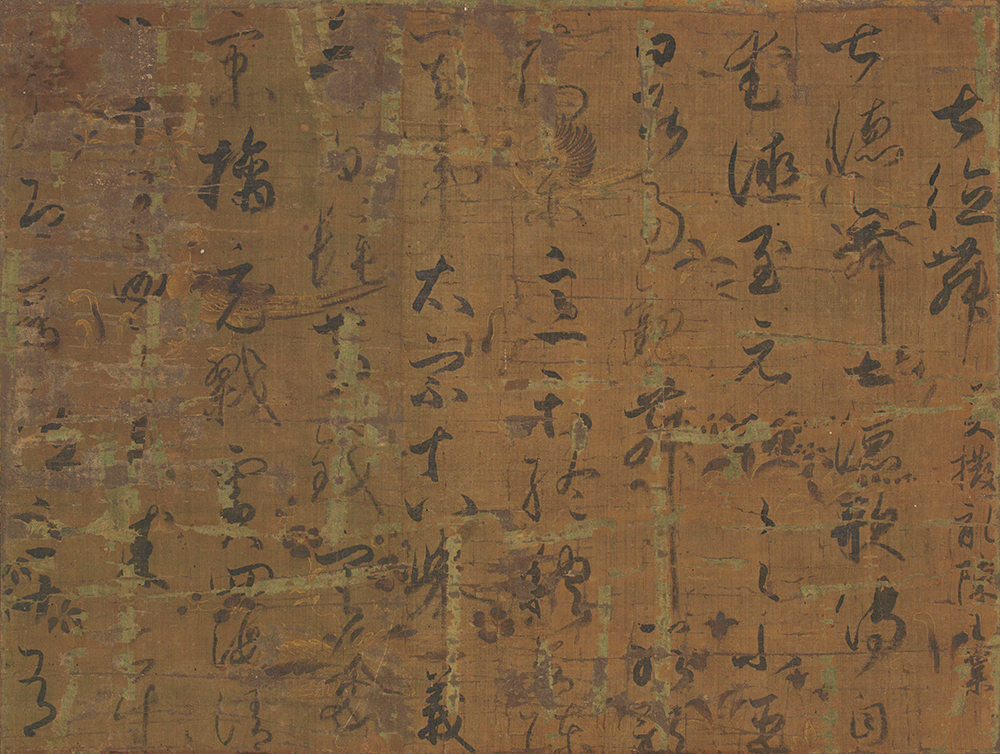
“Dance of the Seven Virtues” from Collection of Writings by Bai Juyi.
Attributed to Minamoto no Toshifusa
Heian period, 12th century.
(Different sections on view over two rotations.)

Plants and Insects (detail). By Shen Quan
Qing dynasty (China), 18th century.
(Different sections on view over two rotations.)
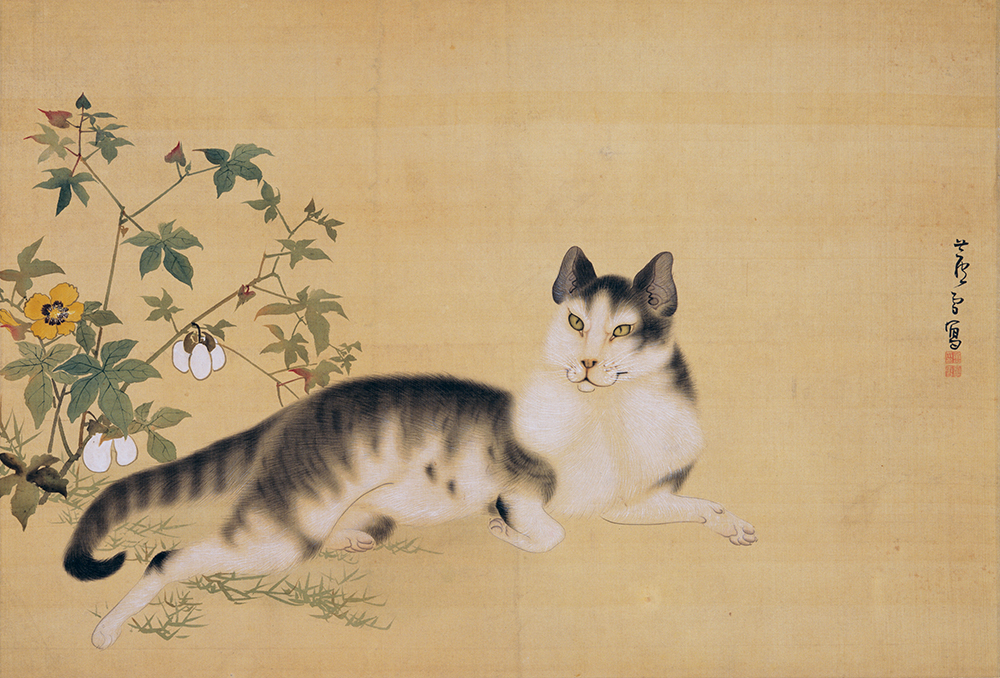
Cat and Cotton Plants. By Nagasawa Rosetsu
Edo period, 18th century.
(On view: July 9–August 4)
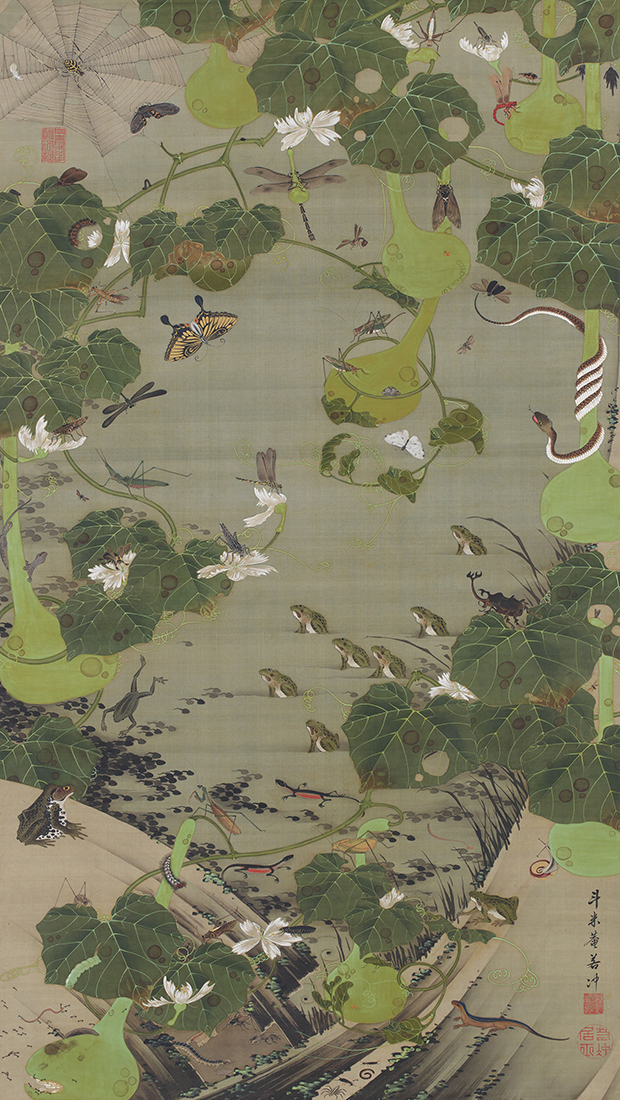
"Pond and Insects" from Colorful Realm of Living Beings (National Treasure).
By Ito Jakuchu
Edo period, 18th century.
(On view: August 6–September 1)
Figurines and everyday objects shaped like animals are a familiar sight. Some are so meticulously crafted, they could almost be mistaken for the real thing. Others accentuate animals’ endearing features to delight and entertain. This section introduces sculpted and decorative works passed down by the Imperial Household, including ones from the now-lost Meiji Palace, like large vases and mounted textiles. Visitors are invited to explore and engage with these ingenious depictions of wildlife rendered in a remarkable range of techniques.
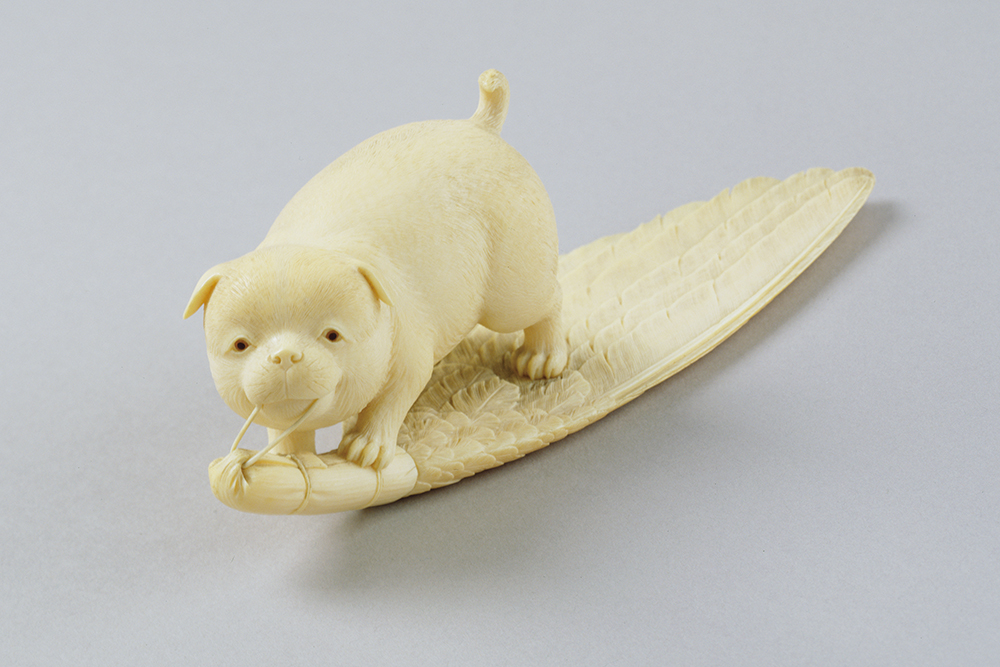
Puppy and Feather Brush
Late Meiji–Taisho era, 20th century.
(On view throughout the exhibition.)
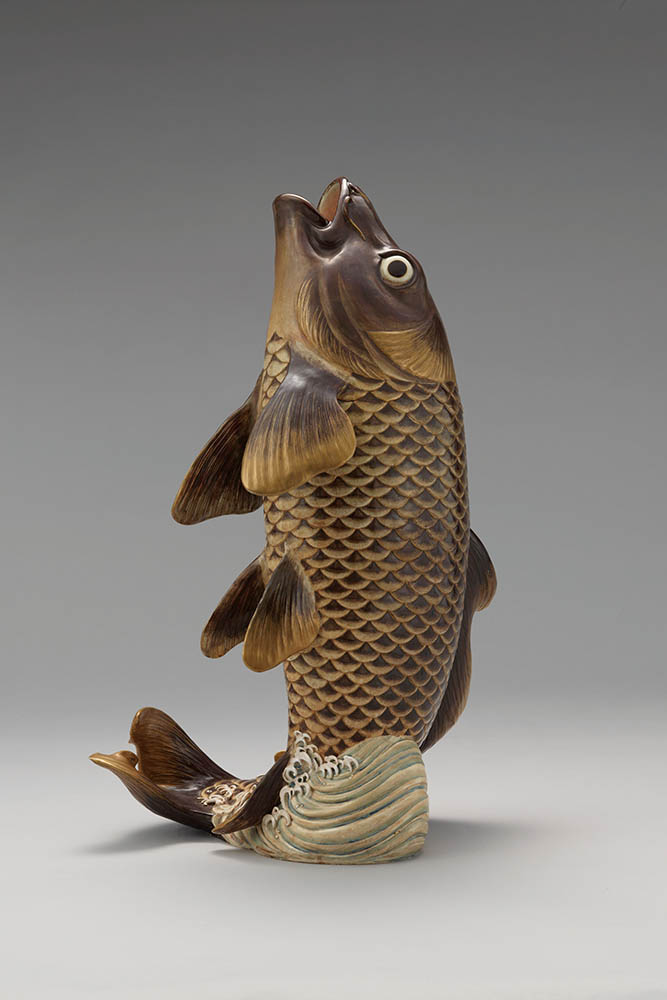
Carp. By Kawamoto Eijiro
Taisho era, 1913.
(On view throughout the exhibition.)
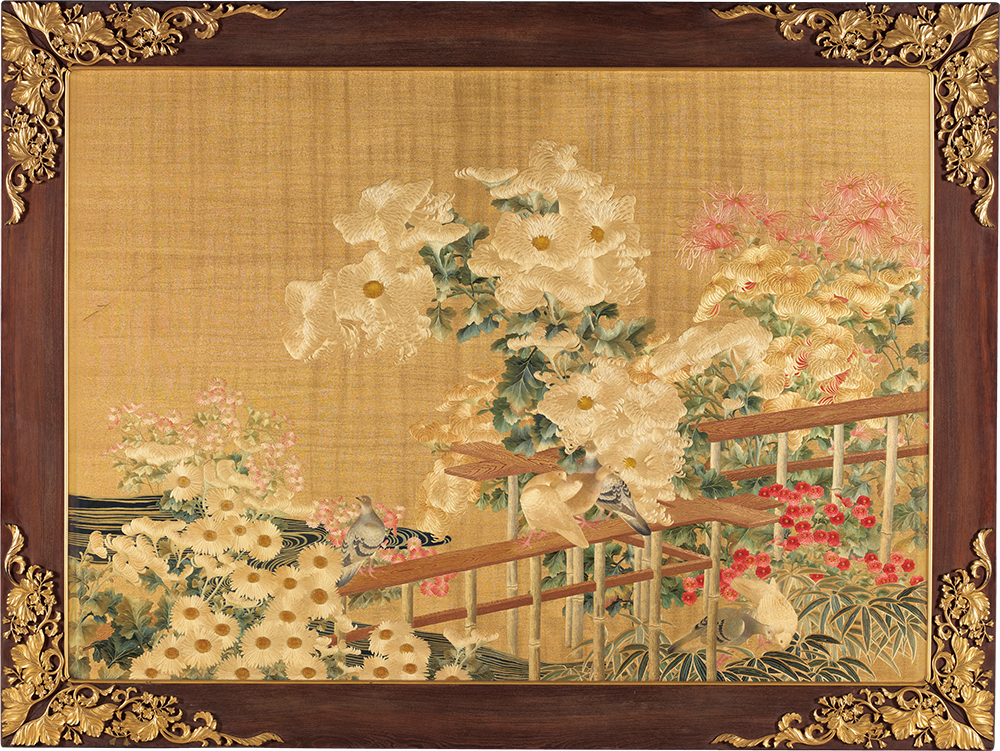
Chrysanthemums and Doves. By Iida Shinshichi IV
Meiji era, 1911.
(On view: July 9–August 4)
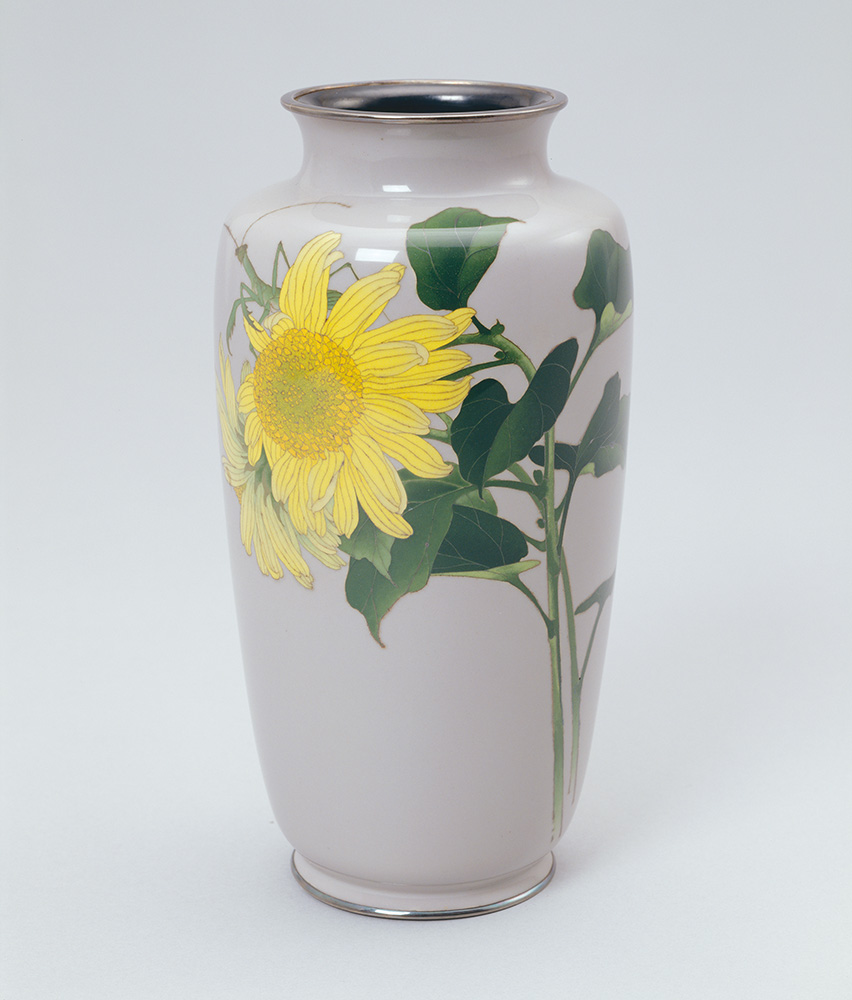
Cloisonné Vase with Sunflowers and Mantis.
By Ando Cloisonne Co., Ltd.
Late Meiji era, 20th century.
(On view throughout the exhibition.)
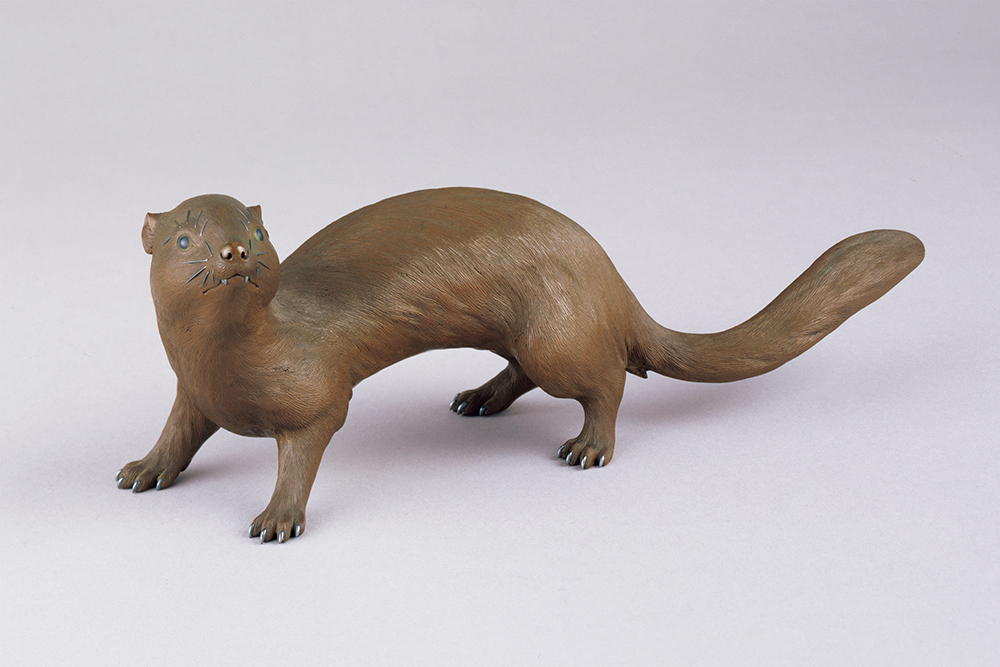
Weasel
Meiji era, 19th century.
(On view throughout the exhibition.)
This chapter highlights the myriad forms and colors found in art inspired by the animal kingdom around the world. The Imperial Household is tasked with promoting world peace through international diplomacy. In the course of their duties, Imperial Family members are often gifted works of art representing prominent international artists or invaluable traditional art forms. Birds, fish, and other animals play the starring roles in these richly varied objects, including an ancient Greek amphoriskos, a colorful appliqué textile, a striking glass vase with fish on it, lamps adorned with sea creatures, and a bird rendered in glittering stones.
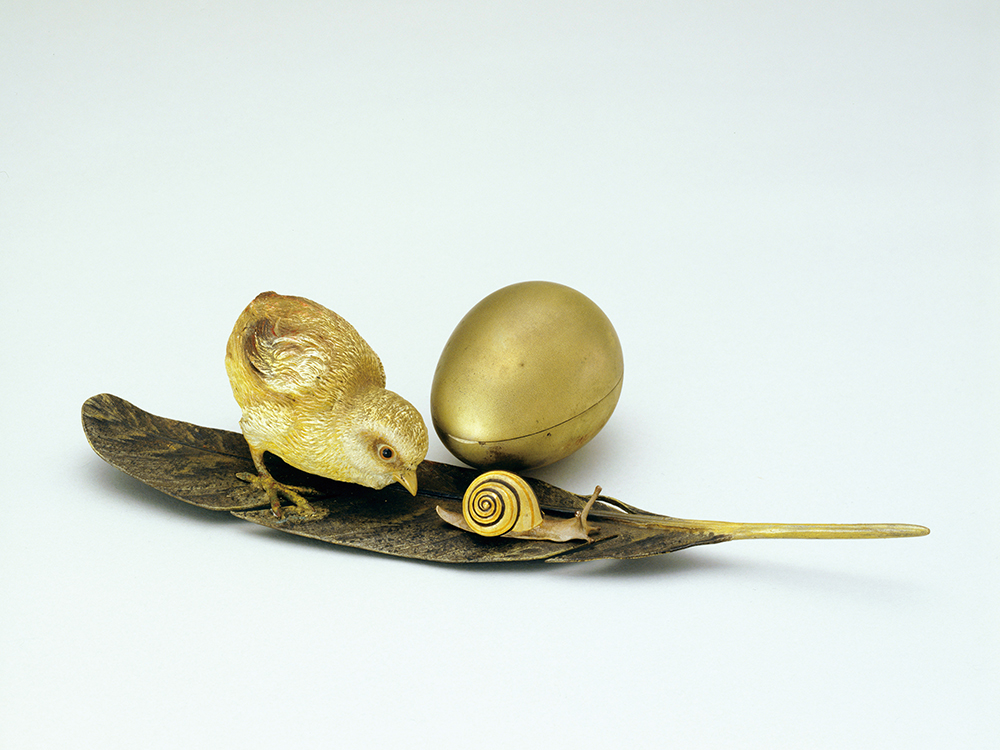
Inkstand with a Chick and Snail
France, early 20th century.
(On view throughout the exhibition.)
*All works included in this exhibition are housed in the Museum of the Imperial Collections, Sannomaru Shozokan.
Exhibition
Wild Wonders: The Animal Kingdom in the Imperial Collections
Exhibition Dates
Tuesday, July 9–Sunday, September 1, 2024
First Rotation: July 9–August 4
Second Rotation: August 6–September 1
Closed
Mondays, July 16 and August 13
(When a national holiday falls on a Monday, the museum remains open and closes that Tuesday.)
Subject to change.
Exceptionally open on Mondays: July 15 and August 12
Hours
Admissions
Adults: ¥1,000 University students: ¥500
*Free admission for high school students, visitors under 18, and visitors aged 70 years or more. Please show valid ID or other documentation.
*All visitors including those eligible for free admission or other discounts are kindly requested to make a reservation. However, visitors with disabilities (along with the one assistant) will be admitted for free without a booking.
Number of objects in the exhibition
52 works (All housed in The Museum of the Imperial Collections, Sannomaru Shozokan.)
Organizer
The Museum of the Imperial Collections, Sannomaru Shozokan
Venue
The Museum of the Imperial Collections, Sannomaru Shozokan
1-8 Chiyoda, Chiyoda-ku, Tokyo, 100-0001 (within the Imperial Palace East Gardens)
[Museum website] https://shozokan.nich.go.jp/en/
[Instagram] https://www.instagram.com/shozokan_pr/
Official account @shozokan_pr
Tel.
+81 (0)50-5541-8600 (NTT Hello Dial Service)
Press Inquiries
Public Relations Office (within Kyodo PR) of The Museum of the Imperial Collections, Sannomaru Shozokan
Contact: Ms. Mitsui
10th Floor, Ginza Shochiku Square, 1-13-1 Tsukiji, Chuo-ku, Tokyo, 104-0045
Tel: +81 (0)3-6264-2382
E-mail: shozokan-pr@kyodo-pr.co.jp
The Museum of the Imperial Collections, Sannomaru Shozokan
1-8 Chiyoda, Chiyoda-ku, Tokyo, 100-0001 (with in the East Gardens of the Imperial Palace)
Subway Lines: 5-minute walk from Otemachi Station (Exit c13a)
JR Lines: 15-minute walk from Tokyo Station (Marunouchi North Exit)
◎ Hirakawa-mon Gate >>>
Subway Tozai Line: 10-minute walk from Takebashi Station (Exit 1a)
◎ Kitahanebashi-mon Gate >>>
Subway Tozai Line: 15-minute walk from Takebashi Station (Exit 1a)
*Hirakawa-mon Gate and Kitahanebashi-mon Gate are closed on Fridays and when the East Gardens of the Imperial Palace are closed.
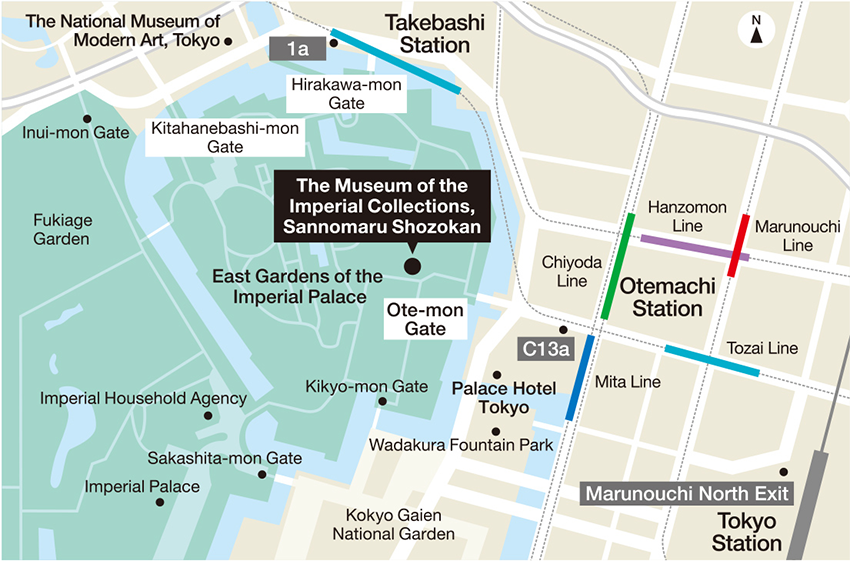
In 1989, His Majesty the Emperor Emeritus and His mother Empress Kojun gifted a substantial collection of art to the nation of Japan that had previously been passed down by the Imperial Family. In November 1993, the Museum of the Imperial Collections was established in the East Gardens of the Imperial Palace in order to conserve these works, discover more about them through research, and make them accessible to the public.
The Museum’s collection spans diverse genres, including calligraphy, painting, and decorative arts. Visitors can view many iconic, celebrated works from each period of Japan’s history as well as pieces from around the world that have been gifted to members of the Imperial Family.
Since 2019, construction has been underway to expand the Museum’s storage and exhibition spaces and allow it to pursue a broader range of initiatives. Also, the Museum’s administration was transferred from the Imperial Household Agency to the National Institutes for Cultural Heritage in October 2023 to roughly coincide with the Museum’s partial reopening on November 3. A full reopening is planned for 2026.
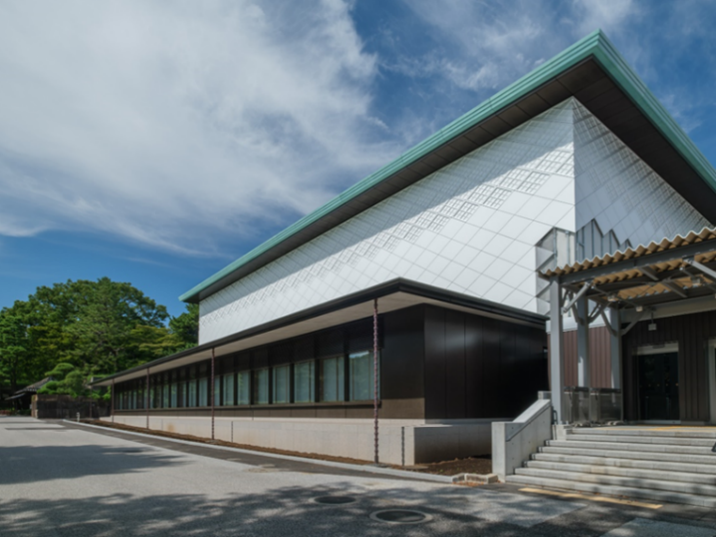
The Museum exterior
For the latest information, please visit the Museum website or
call at +81 (0)50-5541-8600 (NTT Hello Dial Service).